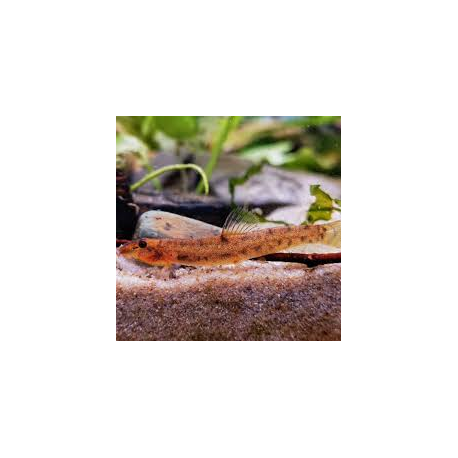More info
Datasheet
| Minimum Tank Size | 40 litres / 10.57 US gallons |
| Maximum Size | 4.0cm / 1.57inches |
| Temperature | 21°C / 69.80°F - 26°C / 78.80°F |
| Hardness | 0.00dgH / 0ppm - 5.04dgH / 90ppm |
| pH | 3.5-6.5 |
General Description
The Kottelatlimia Pristes, a member of the Cobitidae family, is a species occasionally found in the aquarium trade. It can be distinguished from other species by various physical characteristics such as size, fin rays, and body markings.
Aquarium Setup
To create an ideal habitat for the Kottelatlimia Pristes, a tank with a minimum size of 40 litres should be prepared. The setup should include a soft, sandy substrate to mimic its natural habitat as the fish may bury itself at times. Addition of water-worn rocks, driftwood branches, and tree roots before the substrate is essential. Dim lighting is preferred unless growing plants, and clean water with proper oxygenation is crucial for their well-being.
Behaviour
Kottelatlimia Pristes are not particularly aggressive and should not be housed with larger or more competitive fish. They thrive in the company of conspecifics and should ideally be kept in groups of four or more. Peaceful interactions have been noted within the species, but caution is advised with other tank mates as they may prey on eggs or fry.
Feeding and Diet
As micropredators, Kottelatlimia Pristes sift through substrate to extract insect larvae, small crustaceans, and similar food sources. In captivity, they readily accept a varied diet that includes sinking dried foods, live, and frozen options like Artemia, Tubifex, Daphnia, and bloodworm.
Reproduction & Dimorphism
Details about the reproduction of Kottelatlimia Pristes remain unrecorded. Sexual dimorphism is evident in mature males through enlarged pectoral fins with serrae, while adult females typically exhibit a heavier and larger body size compared to males.
Habitat and Distribution
This species is commonly found in small, slow-moving forest streams with tannin-stained water in regions such as Selangor State, Peninsular Malaysia, and Riau province, Sumatra. They favor freshwater and blackwater peat swamps with minimal dissolved minerals, low pH levels, and substrates composed of peat, mud, or sand. Coexistence with various fish species has been observed in their natural habitats.


